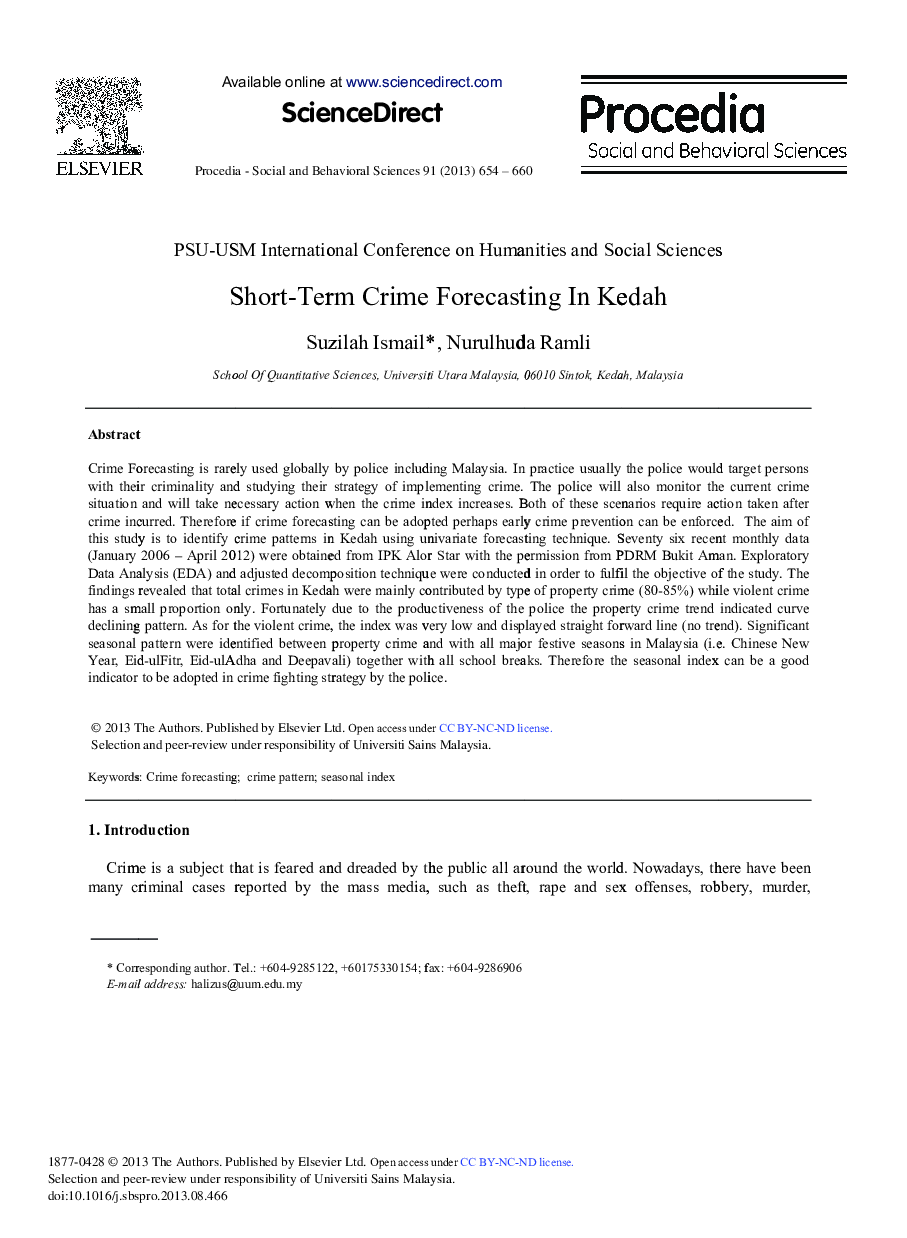| Article ID | Journal | Published Year | Pages | File Type |
|---|---|---|---|---|
| 1118368 | Procedia - Social and Behavioral Sciences | 2013 | 7 Pages |
Crime Forecasting is rarely used globally by police including Malaysia. In practice usually the police would target persons with their criminality and studying their strategy of implementing crime. The police will also monitor the current crime situation and will take necessary action when the crime index increases. Both of these scenarios require action taken after crime incurred. Therefore if crime forecasting can be adopted perhaps early crime prevention can be enforced. The aim of this study is to identify crime patterns in Kedah using univariate forecasting technique. Seventy six recent monthly data (January 2006 – April 2012) were obtained from IPK Alor Star with the permission from PDRM Bukit Aman. Exploratory Data Analysis (EDA) and adjusted decomposition technique were conducted in order to fulfil the objective of the study. The findings revealed that total crimes in Kedah were mainly contributed by type of property crime (80-85%) while violent crime has a small proportion only. Fortunately due to the productiveness of the police the property crime trend indicated curve declining pattern. As for the violent crime, the index was very low and displayed straight forward line (no trend). Significant seasonal pattern were identified between property crime and with all major festive seasons in Malaysia (i.e. Chinese New Year, Eid-ulFitr, Eid-ulAdha and Deepavali) together with all school breaks. Therefore the seasonal index can be a good indicator to be adopted in crime fighting strategy by the police.
